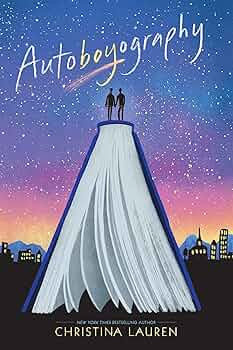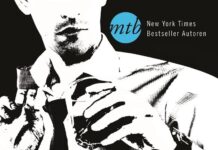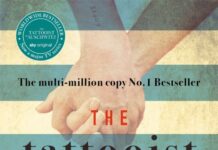In a literary landscape rich with stories of self-discovery and heartache, Christina Lauren’s Autoboyography emerges as a tender exploration of identity and love in the digital age. This novel navigates the intricate journey of a young protagonist grappling with his sense of self while forging unexpected connections that challenge societal boundaries. Through its vivid characters and thoughtful prose, Autoboyography invites readers into a world where personal truths and emotional honesty intermingle, offering a nuanced outlook on the universal quest for belonging and acceptance. This review delves into the themes, narrative style, and emotional resonance of the book, unpacking how Christina Lauren crafts a compelling story that resonates beyond its pages.
Exploring the Nuanced Portrayal of Teen Identity and Self-Discovery in Christina Lauren’s Autoboyography

Christina Lauren’s Autoboyography delves deep into the evolving landscape of teen identity by capturing the intricate emotions and conflicts a young protagonist faces while navigating self-discovery. Far from a simplistic coming-of-age tale, the narrative interweaves themes of cultural heritage, sexuality, and the pressures imposed by societal expectations, emphasizing the fluidity of identity. The characters are crafted with layers of vulnerability and strength, making their journeys authentic and relatable.Through intimate moments and candid conversations, readers witness the protagonist’s oscillation between fear and hope, confusion and clarity-a true reflection of adolescent life’s ambiguity.
The portrayal extends beyond the individual, highlighting the importance of community and support systems.Key relationships in the story reveal the extent to which love and acceptance act as catalysts for personal growth. elements of friendship, family dynamics, and mentorship are thoughtfully explored, illustrating how they collectively shape self-understanding. Below is a brief overview of core themes that underscore the narrative’s nuanced approach:
- Cultural Identity: The tension between tradition and personal desires
- Sexual Orientation: Embracing complexity without labels
- Emotional Growth: Navigating fear, rejection, and acceptance
- Support Networks: The power of connection and empathy
| Aspect | Depiction | Impact |
|---|---|---|
| cultural Expectations | Balanced with personal desires | Highlights internal conflict |
| Identity Labels | Fluid and non-restrictive | Encourages open exploration |
| Support Systems | Family and friends | Facilitate healing and growth |
How friendship and First Love Intertwine to Shape the Characters’ Emotional Journeys in Autoboyography
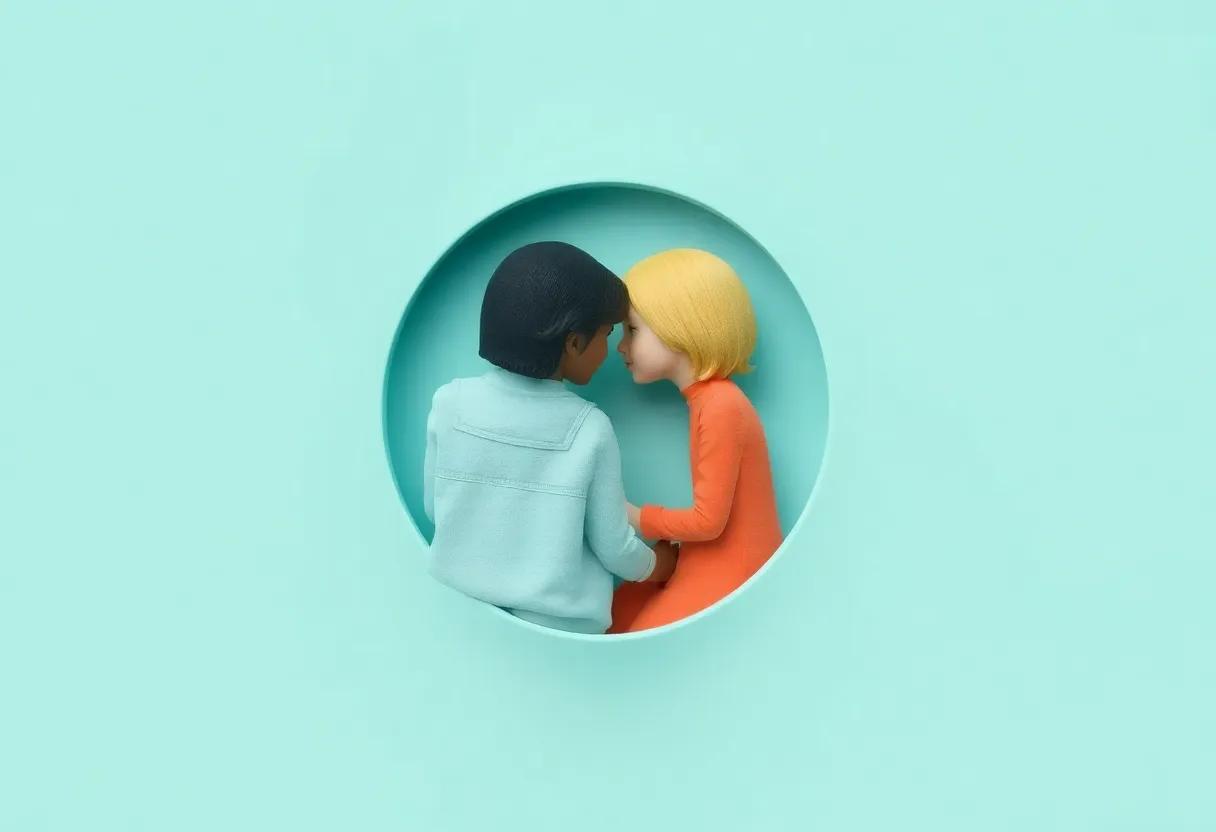
In Autoboyography, the delicate weaving of friendship and first love acts as a powerful catalyst for the emotional growth of the protagonists. The narrative doesn’t merely present these relationships as parallel streams but rather portrays their complex interdependency. Friendship lays the foundation of trust and vulnerability, providing a safe space where honesty thrives. As these bonds deepen, the characters begin to navigate the uncharted waters of first love, where infatuation is tinged with fear and hope with uncertainty. This duality enhances their self-awareness, compelling them to confront internal conflicts surrounding identity, acceptance, and the societal expectations they grapple with.
What stands out in this journey is the fluid transition between friendship and love, a progression marked by moments of quiet revelation and passionate intensity. key emotional milestones emerge along the way, reflecting the characters’ multifaceted growth:
- Trust-building: Through shared experiences, characters learn to rely on each other beyond superficial interactions.
- Self-discovery: Emotional intimacy triggers questions about personal desires and sexual orientation.
- Conflict and resolution: Misunderstandings test bonds but ultimately reaffirm commitment and empathy.
- Acceptance: Characters embrace their authentic selves in tandem with embracing each other.
| Emotional phase | Impact on Characters |
|---|---|
| Initial Friendship | building trust and comfort |
| First Confession | Vulnerability and hope |
| Facing Challenges | Growth through conflict |
| Mutual Acceptance | solidified identity and love |
The Impact of Cultural Expectations and Family Dynamics on the Protagonist’s Path in Autoboyography
At the heart of Autoboyography lies a nuanced exploration of how cultural expectations shape the protagonist’s decisions and self-perception. The protagonist treads a delicate balance between honoring familial heritage and embracing his own truth. This tension is palpable in moments where traditional values collide with the burgeoning realization of his identity, creating a landscape rife with both conflict and growth. The weight of expectations is not just a backdrop but an active force challenging him to reconcile the past with the possibilities of an authentic future.
Family dynamics further complicate this journey,serving as both a sanctuary and a battleground. The protagonist’s relationships are imbued with complexity, where love, loyalty, and misunderstanding coexist. These interactions underscore themes such as:
- Generational gaps influencing interaction and acceptance
- Unspoken rules dictating behaviour and emotional expression
- The negotiation of identity within entrenched family roles
To illustrate how these forces interplay, consider the emotional spectrum navigated by the protagonist throughout the story:
| Aspect | Family Influence | Personal Impact |
|---|---|---|
| Acceptance | Conditional support tied to tradition | Feelings of hesitation and hope |
| Communication | Frequent misunderstandings | Internal conflict and growth |
| Identity | Pressure to conform | Emergence of self-affirmation |
Analyzing the Role of Writing and Storytelling as a Healing Tool in the Narrative of Autoboyography

The novel also illuminates the multifaceted ways writing functions as a healing tool through:
- Emotional articulation: Transforming intangible feelings into tangible narratives helps characters name and understand their pain.
- Connection building: Sharing stories fosters empathy and cultivates bonds, mitigating isolation.
- Identity reclamation: Writing offers control over self-representation, empowering characters to craft their unique truths.
This thematic exploration resonates widely, reminding readers that healing often requires the courage to tell one’s story and, in turn, listen to others with an open heart.
The Subtle Yet Powerful Representation of LGBTQ+ Themes and Their Authenticity in Autoboyography

The novel embraces a spectrum of emotions, showing that love and identity are rarely straightforward. To highlight this richness, key elements emerge repeatedly:
- Subtle gestures: small acts of kindness and looks that speak louder than words
- Internal dialogues: honest reflections that reveal self-doubt, hope, and courage
- Social context: the tension of societal expectations balanced with personal truth
This approach not only honors the layered reality of LGBTQ+ lives but also ensures a representation that feels sincere and respectful rather than performative or tokenistic.
| Aspect | Representation | Impact |
|---|---|---|
| Character Progress | Slow, thoughtful self-awareness | Builds empathy and realism |
| Relationship Dynamics | Flawed and evolving | Reflects true complexity of love |
| Societal Challenges | Implicit and overt pressures | Contextualizes personal struggles |
Examining the Setting as a Character: How Small-Town Life Influences the Story’s Mood and Message

Small-town life in Autoboyography is more than just a backdrop-it breathes life into the narrative, shaping the characters’ experiences and emotions. The town’s close-knit community creates an atmosphere of both intimacy and confinement. On one hand, the familiarity offers warmth and support, fostering moments of genuine connection. On the other, it amplifies the pressure to conform, casting a shadow over personal freedoms. Through detailed descriptions of everyday life-from the local diners to the relentless gossip-the setting becomes a silent observer and an active participant in the unfolding story, influencing the protagonists’ journeys in subtle yet profound ways.
The interplay between the town’s rhythms and the characters’ internal struggles highlights key themes of identity and self-discovery. Moments of quiet isolation, like lakeside reflections or walks through empty streets, contrast sharply with bustling school hallways and public events, painting a complex emotional landscape.Consider the table below, which outlines how various elements of the setting correspond to mood shifts within the novel:
| Setting Element | Mood Conveyed | impact on Characters |
|---|---|---|
| Annual Town Festival | Joyful yet restrictive | highlights community bonds but enforces social expectations |
| Quiet Lakeside | Peaceful and reflective | Facilitates introspection and emotional clarity |
| High School Hallways | Conflicted and tense | Magnifies peer pressure and identity conflicts |
This nuanced portrayal transforms the setting into a character itself-one that concurrently nurtures and challenges, enriching the story’s mood and echoing its message of embracing complexity in love and self. The small town’s dual nature captures the bittersweet reality of growth amid constraints, making it intrinsic to the novel’s emotional core.
Balancing Humor and Heartbreak: The Emotional Tone That Makes Autoboyography Relatable and Engaging

Autoboyography masterfully intertwines moments of lighthearted humor with profound emotional depth, creating a narrative that resonates on multiple levels. The witty exchanges between Tanner and Sebastian lend the story a genuine warmth, offering readers respite from the intense exploration of identity and familial expectations. This balance keeps the narrative engaging without diminishing the real struggles the characters face. Humor is not simply a tool for entertainment; it serves as a vital coping mechanism, allowing readers to connect more deeply with Tanner’s journey as he navigates the complexities of love, self-acceptance, and cultural pressure.
The emotional landscape of autoboyography is further enriched by its honest portrayal of heartbreak and hope. Relationships are depicted with nuance, acknowledging the messiness and vulnerability inherent in young love. The characters’ shared experiences-be it awkward first dates, moments of self-doubt, or profound revelations-form a tapestry of emotions that feel authentic and relatable. This delicate equilibrium invites readers to reflect on their own stories, reminding us all that humor and heartbreak can coexist, broadening our understanding of the human experience.
- Humor as a lens to explore identity
- Heartbreak depicted with sincerity and depth
- Relatable emotional moments that humanize the characters
- Balance between light moments and serious themes
The Craft of Character Development and Dialogue that Brings Depth to Autoboyography’s Cast
In Autoboyography, Christina Lauren masterfully crafts characters that resonate with authenticity and nuance. Rather than relying on archetypes, the novel’s protagonists are painted with intricate layers-flaws, vulnerabilities, and ambitions that mirror real-life complexities. Through subtle shifts in voice and perspective, readers are invited into the intimate minds of each character, cultivating empathy and a deeper emotional investment. The beauty lies in how the characters’ identities evolve,reflecting the turmoil and triumphs of self-discovery. Their growth feels organic, rooted not in external plot devices but in their own inner dialogues and interactions.
The dialogue further elevates this rich character tapestry, serving as both a mirror and a catalyst. conversations are infused with warmth, tension, and sometimes silence, capturing the essence of genuine human connection. Notice how the exchanges aren’t just vehicles for plot progression but reveal motivations and unspoken fears. For example, moments between Tanner and Roman pulse with both hesitation and yearning, illustrating the fragile dance of burgeoning love. Below is a brief overview of how dialogue styles vary among key characters, shaping the emotional landscape of the story:
| Character | Dialogue Style | Emotional Impact |
|---|---|---|
| Tanner | Reserved, reflective, often hesitant | Conveys his internal conflict and growth |
| Roman | Confident, candid, occasionally playful | Breaks down walls and nurtures openness |
| Secondary Characters | Varied-from supportive to confrontational | Add texture and challenge main arcs |
- Subtle nuances in speech highlight cultural and personal backgrounds.
- Interruptions and pauses reveal emotional tension beneath calm exteriors.
- Non-verbal cues embedded in dialogue create multidimensional conversations.
Why Autoboyography is Recommended for Readers Seeking Honest and Tender young Adult Romance
autoboyography stands out as a heartfelt exploration of identity and first love, making it a poignant recommendation for readers craving authenticity in young adult romance. Christina Lauren crafts characters whose vulnerabilities and strengths resonate deeply, presenting a narrative unafraid to delve into the complexities of self-discovery. The emotional depth is balanced with tender moments that avoid clichés, allowing readers to experience a story that feels both intimate and universal.This book invites readers to walk alongside its protagonists as they navigate the uncertainties of their feelings and futures, fostering empathy and understanding.
What makes this novel especially appealing is its honest portrayal of relationships that are as fragile as they are powerful. Readers who appreciate:
- Genuine character growth without rushed resolutions
- A nuanced depiction of cultural and personal identity
- Dialogues that reflect real-world conflicts and tenderness
- Moments of quiet reflection layered with emotional intensity
will find Autoboyography a refreshing addition to their reading list. The story’s balance between heartache and hope invites readers not just to witness a romance, but to feel it in a way that lingers beyond the final page.
Suggestions for Book Clubs: Thought-Provoking discussion Topics Inspired by Autoboyography
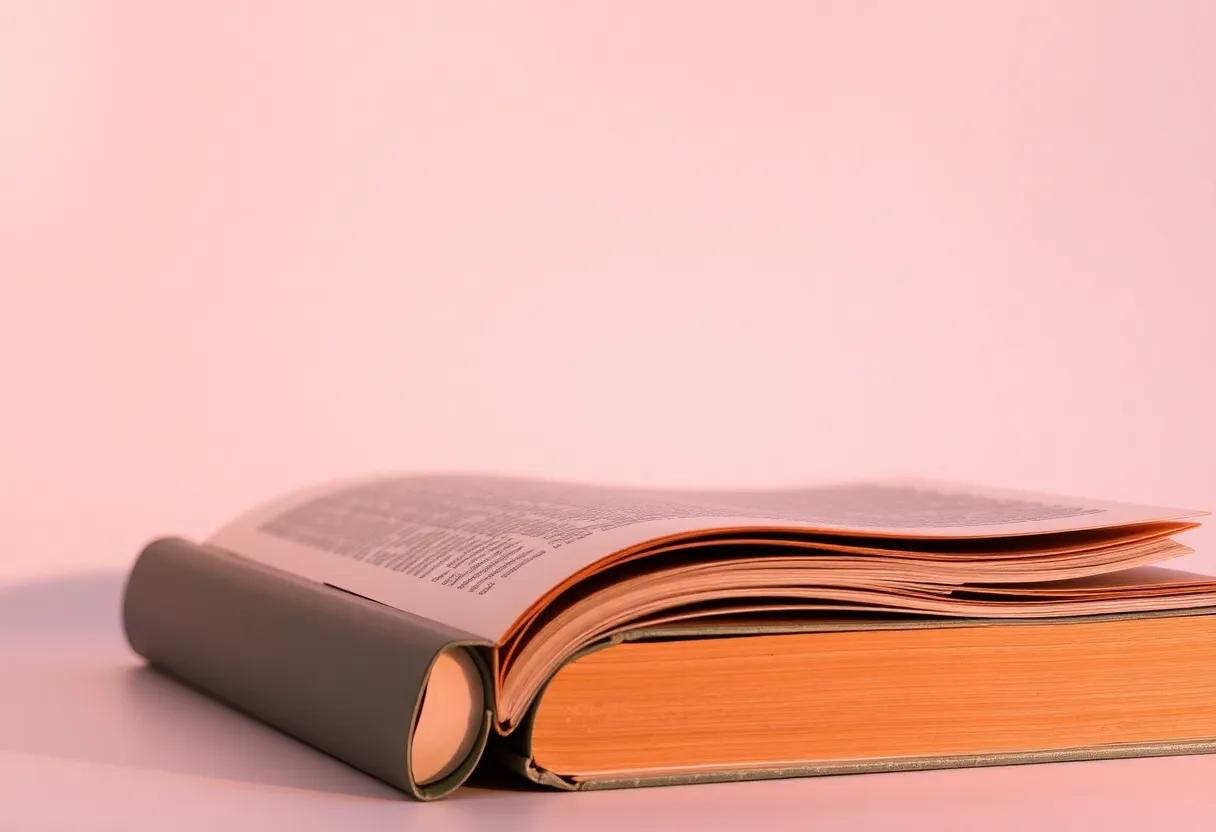
Christina Lauren’s Autoboyography invites readers to dive deep into the complexities of self-discovery and the multifaceted nature of identity. When discussing the book in a group setting, consider examining how the protagonist’s journey challenges traditional notions of identity and belonging. How do the characters’ internal conflicts and external pressures mirror real-life struggles with acceptance and authenticity? Encourage your book club to explore the interplay between societal expectations and personal truth,questioning how these forces shape the characters’ decisions and relationships. This can open up rich conversations about the often messy but beatiful process of defining oneself.
Love, in its many forms, stands at the heart of Autoboyography. It prompts readers to reflect on the boundaries and freedoms inherent in relationships, especially in the context of young love and self-expression. You might ask your group to discuss the different layers of love portrayed in the novel - romantic, familial, and self-love – and how these intersect or diverge. What does the book suggest about vulnerability and courage in love? To facilitate a dynamic discussion, here are some thought-provoking prompts your club can explore:
- How does the setting influence the characters’ understanding of identity and love?
- In what ways do societal pressures shape or hinder the characters’ relationships?
- What role does communication-spoken and unspoken-play in developing trust and intimacy?
- How does the concept of ‘coming out’ intersect with broader themes of self-acceptance?
Exploring the Collaborative Writing Process Behind the Unique Voice of Autoboyography
In crafting this unique narrative, Christina Lauren embraces a methodical yet fluid approach characterized by:
- Joint brainstorming sessions to align character arcs and thematic intentions.
- Iterative writing rounds where chapters are reviewed, refined, and enhanced collaboratively.
- Open communication to ensure emotional truths are respectfully conveyed from both authors’ viewpoints.
| Element | Contributor | Impact on Voice |
|---|---|---|
| Character Development | Both writers | Creates multi-dimensional personalities |
| Dialogue Nuances | Shared | Gives authentic and distinct voices |
| Emotional Depth | Combined experiences | Invokes empathy and realism |
An Insightful look at Christina Lauren’s Background and Influences as the Creative Force Behind Autoboyography
christina Lauren,the pen name for the dynamic writing duo Christina Hobbs and Lauren Billings,brings a unique blend of voices and perspectives to Autoboyography. Both authors have backgrounds steeped in storytelling, with Hobbs specializing in editing and Billings in creative writing. Their collaboration is a testament to how diverse experiences and narrative styles can merge to create compelling, authentic characters and plots. Their work often highlights emotional complexities and tender discoveries, influenced by their shared dedication to representing LGBTQ+ voices with nuance and respect. This commitment stems not only from their literary interests but also from their desire to challenge conventional portrayals of young love and identity.
Central to their creative force is an empathetic approach-infused with insights from personal growth,cultural observations,and social awareness-that shapes the novel’s rich exploration of self-discovery. the authors have cited influences ranging from contemporary LGBTQ+ literature to classic coming-of-age tales, which intertwine throughout the narrative with subtlety and power.The table below outlines some key influences that the duo has acknowledged as foundational to their work on Autoboyography:
| Influence | Impact on Autoboyography |
|---|---|
| Contemporary LGBTQ+ Novels | Authentic representation of queer youth and relationships |
| Classic coming-of-Age Stories | Exploration of identity and emotional growth |
| Diverse cultural Narratives | Nuanced depiction of family and community dynamics |
| Personal Experiences | emotive and relatable character development |
Autoboyography offers a heartfelt exploration of identity and love that resonates beyond its pages.Christina Lauren crafts a story both intimate and universal, inviting readers to reflect on the complexities of self-discovery and connection. Whether you find yourself lost in the characters’ struggles or uplifted by their growth, this novel leaves a quiet, lingering impression-one that reminds us all of the courage it takes to embrace who we truly are.

